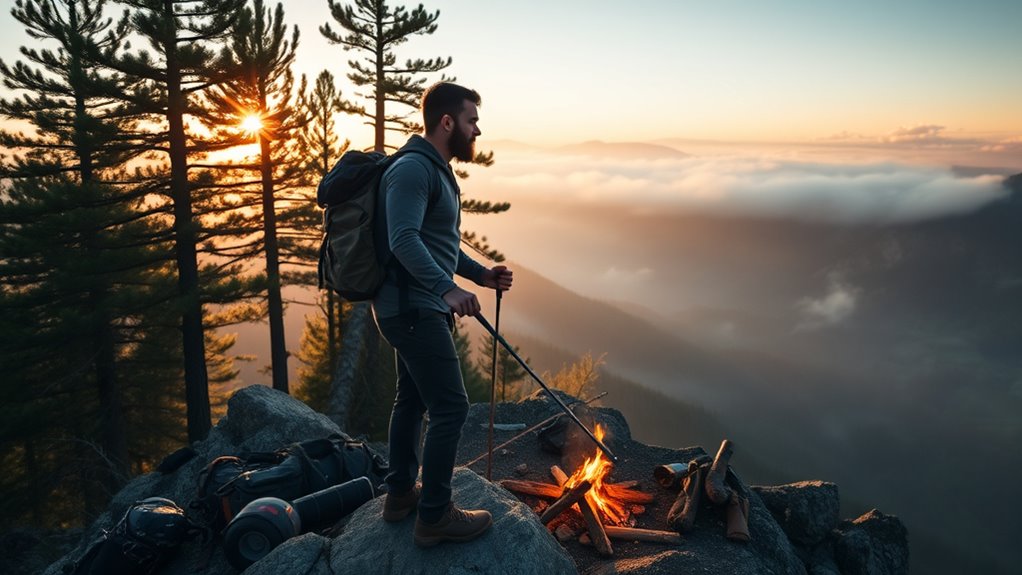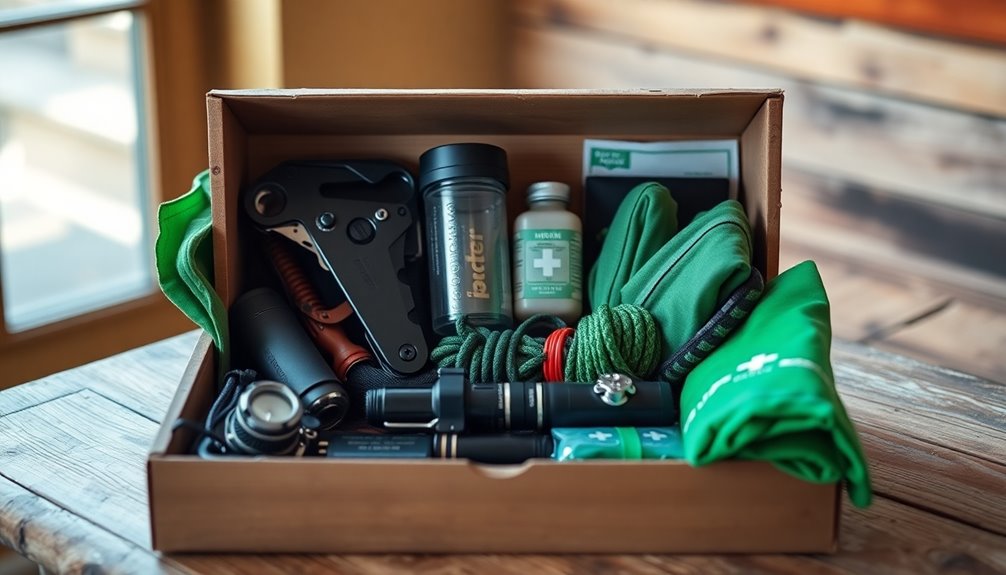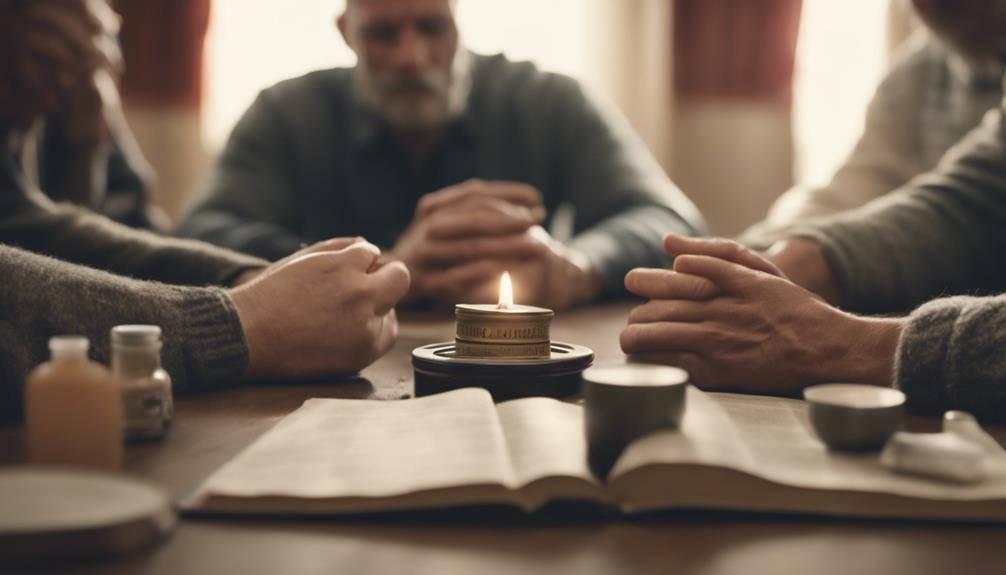In solo survival, your mental strength is your greatest tool. To beat panic, focus on deliberate breathing, grounding yourself in the present, and breaking problems into small steps. Visualize success and trust your abilities to boost confidence. Recognize panic as an emotional response and use mental hacks like re-evaluating supplies or changing your environment to stay calm. Keep practicing these strategies to enhance your resilience—you’ll discover more techniques to strengthen your instinctual responses.
Key Takeaways
- Develop mental resilience through visualization and positive affirmations to boost confidence before and during survival situations.
- Use grounding techniques like focusing on senses to anchor your mind in the present and reduce panic.
- Break complex survival problems into manageable steps to prevent overwhelm and maintain clear decision-making.
- Recognize panic as an emotional response, not a reflection of ability, and implement calming strategies immediately.
- Practice mental hacks regularly to enhance focus, emotional regulation, and the ability to stay calm under pressure.

Surviving alone in the wild tests more than just your physical skills; it challenges your mental resilience and emotional stability. When you’re isolated and facing unpredictable circumstances, managing stress becomes essential. Stress management isn’t just about staying calm; it’s about maintaining clarity so you can think clearly and act efficiently. As panic starts to creep in, your ability to regulate your emotions can determine whether you find safety or spiral into chaos. Deep breathing exercises, grounding techniques, or simply focusing on your senses can help anchor you in the present moment. The goal is to prevent your mind from racing with worst-case scenarios, which only amplifies stress and hampers decision-making. Incorporating natural antioxidants from your environment or diet can also help support your mental clarity during stressful situations. Your decision making strategies are your lifeline when you’re alone in the wild. Every choice, from finding water to selecting shelter, has immediate and long-term consequences. When panic takes hold, your judgment can become clouded, leading to poor decisions. To combat this, it helps to develop a mental checklist of priorities—such as securing water, warmth, and signaling for rescue—and stick to it. Breaking down complex problems into manageable steps reduces overwhelm and keeps you focused. Remember, rapid, impulsive decisions driven by fear often lead to mistakes. Instead, pause briefly, breathe, and evaluate your options calmly. This deliberate approach preserves your energy and increases your chances of survival. Building mental resilience involves cultivating a mindset that emphasizes adaptability and problem-solving. You can train this before even entering the wild by practicing visualization and positive affirmations. Visualize yourself handling stressful situations successfully, which builds confidence and reduces anxiety when they occur. Remind yourself that panic is an emotional response, not a reflection of your true capabilities. When you recognize signs of mounting stress, take proactive measures—like changing your environment, moving to a safer spot, or re-evaluating your supplies. These small acts reinforce your control over the situation, helping you stay composed. In the end, the key to beating panic lies in your ability to manage stress and implement effective decision making strategies. The more you practice these mental hacks, the better you’ll become at remaining calm under pressure. It’s not just about surviving physically but thriving mentally when faced with adversity. When you keep your mind focused, your emotions in check, and your decisions deliberate, you considerably increase your chances of making it through the toughest moments in the wild. Remember, your mental strength is your most powerful survival tool.
Frequently Asked Questions
How Can I Recognize Early Signs of Panic in Myself?
You can recognize early signs of panic in yourself by developing emotional awareness. Notice physical cues like rapid heartbeat, sweating, or shallow breathing, which often signal panic attacks approaching. Pay attention to sudden feelings of fear or dread that seem disproportionate to the situation. By staying mindful of these signs, you give yourself the chance to implement calming techniques before panic takes hold, helping you stay composed in tough moments.
What Role Does Mindfulness Play in Wilderness Survival?
Mindfulness is your secret weapon in wilderness survival, turning chaos into clarity. It plays a crucial role by helping you stay grounded through mindfulness meditation and present awareness, so panic doesn’t take over. When you focus on the here and now, you conserve energy, make smarter decisions, and reduce stress. Think of it as your mental compass, guiding you calmly through the wild, no matter how intense the situation gets.
Are There Specific Mental Exercises to Boost Confidence Alone?
To boost confidence alone, you can practice trust-building exercises and self-affirmations. Focus on trusting your skills and instincts, reminding yourself of past successes. Repeat positive affirmations like “I can handle this” to reinforce your mental resilience. Visualize successful outcomes to strengthen your mindset. These exercises help you stay calm, confident, and prepared, turning uncertainty into a manageable challenge, even when you’re on your own in the wild.
How Does Sleep Deprivation Affect Mental Resilience in Survival Situations?
Sleep deprivation can markedly weaken your mental resilience in survival situations. When you don’t get enough rest, your ability to stay focused, make decisions, and stay calm deteriorates quickly. This makes it harder to think clearly and react effectively under stress. To boost your mental resilience, prioritize rest whenever possible, and recognize signs of fatigue early. Staying alert and well-rested helps you maintain the mental toughness needed to survive and adapt in tough conditions.
Can Visualization Techniques Improve My Survival Chances?
Visualization techniques can definitely enhance your survival chances. By practicing mental rehearsal, you strengthen your ability to stay calm and focused during emergencies. Visualization benefits include reducing panic, improving decision-making, and boosting confidence. When you vividly imagine yourself handling challenges calmly, your brain prepares you to respond effectively in real situations. So, regularly visualizing success can make a significant difference when you’re alone in the wild, increasing your resilience and chances of survival.
Conclusion
When faced with adversity, remember to breathe deeply, stay focused, and keep hope alive. When panic strikes, pause, assess, and adapt. When isolation tests you, trust your instincts and remind yourself of your resilience. By mastering these mental hacks—calming your mind, controlling your thoughts, and fueling your determination—you turn fear into strength. Because in the wild, your mind is your greatest tool, and your mental game is the key to survival.










